Apr 26, 2013 | ANA, commentary
I just received an email from the American Numismatic Association saying that the Board of Governors announced that they will not extend the contract of Executive Director Jeff Shevlin.
“After considering the Board’s mission and objectives, the Board of Governors concluded that Mr. Shevlin was not the right fit to lead the Association going forward,” Hallenbeck said. “The board felt that it was in the Association’s best interest to sever our relationship and seek new leadership for the Association.”
Unless Jeff did something wrong that the Board is not telling us, this is the wrong decision bordering on downright foolish!
I have had a working relationship with Jeff for more than a year participating with the ANA Technology Committee. I have found Jeff to be incredibly accommodating and wanting nothing but the best for the ANA. He had taken on the role with the ANA Technology Committee as a volunteer before being interviewed and hired as the organizations after being a college professor. In our conversations, he described being the ANA’s executive director as his dream job.
Jeff relocates to Colorado Springs to take over an organization whose last two executive directors were “dismissed” for various reasons. Both of his predecessors pursued legal action against the ANA. Christopher Chipoletti’s suit was settled a few years ago, Larry Shepherd filed his case last December.
What did Jeff do wrong to not be renewed?
Jeff initiated the work to start to bring the ANA into the 21st century by looking at its technology infrastructure. He is concerned that the aging population of the ANA cannot sustain the organization that is not attracting enough younger members. Jeff knows that the way to engage the younger members is to use technology to get them involved and keep them engaged.
Jeff is an enthusiastic ambassador for the hobby. Nicknamed the “So-Called Guy” for his interest and work on So-Called Dollars. So-called Dollars are medals approximately the size of a silver dollar that were struck to commemorate a U.S. historical event. Jeff and Bill Hyder co-wrote Discover the World of CHARBNEAU SO-CALLED DOLLARS. Jeff was a collector. Jeff was one of us.
Maybe that was his problem. Jeff was a collector and not a dealer. While dealers are an important part of the ANA, the dealers do not have buyers without a strong collecting community. Dealers need the collectors as much as the collectors need the dealers. However, the dealer population is limited compared with the potential number of collectors, researchers, and other interested people that could be members of the ANA.
From my perspective, Jeff was doing everything right to help the ANA recover some of its past problems. The ANA has to be an all inclusive organization and think about the collectors and not just the business. The ANA needs to be more open and be able to reach out. The only way to do that in today’s environment is to use technology. Jeff understood that and understood that the ANA has to look at the organization as a whole and find balance.
This move represents everything that has been wrong with the Board of Governors over the last 10 years and have shown that this board has done little to work on the issues that I referenced in my platform.
Rather than set clear policies and goals (one of planks of my platform), the current Board seemingly used Jeff to figure out what to do next. This is NOT how to run a national organization. There are no clear goals, policies, or objectives. If they were the Board would not be in this situation.
Unless the ANA Board of Governors has something more tangible than saying that Jeff “was not the right fit,” it appears that the Board of Governors has once again failed the ANA membership making it time to replace the entire Board of Governors.
Apr 8, 2013 | coins, commentary, foreign, policy
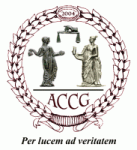 In a test lawsuit filed by the Ancient Coin Collectors Guild (ACCG), the group sued the federal government over the granting of import restrictions and confiscation of coins that foreign government have declared cultural property. The suit filed by ACCG challenges recent Memorandum of Understanding (MOU) between the State Department and the cultural regulators of Cypress and China under the Convention on Cultural Property. On March 25, 2013, the case that ACCG appealed to the Supreme Court was denied a hearing (petition for certiorari).
In a test lawsuit filed by the Ancient Coin Collectors Guild (ACCG), the group sued the federal government over the granting of import restrictions and confiscation of coins that foreign government have declared cultural property. The suit filed by ACCG challenges recent Memorandum of Understanding (MOU) between the State Department and the cultural regulators of Cypress and China under the Convention on Cultural Property. On March 25, 2013, the case that ACCG appealed to the Supreme Court was denied a hearing (petition for certiorari).
Over the last few years, the Coin Collectors Blog has asked readers to sign various petitions and write to the Department of State to stop restrictions on ancient coins. To understand why this is necessary, we have to understand why this is happening.
For a country to request import restrictions and confiscation of cultural property, they are required to send a letter to the State Department asking the United States to enter into an MOU to restrict the import and export of what the asking country considers cultural property as defined by the Convention on the Means of Prohibiting and Preventing the Illicit Import, Export and Transfer of Ownership of Cultural Property 1970, often called the 1970 UNESCO Convention. The purpose of the the treaty was to stop archaeological pillaging and trafficking in cultural property. In other words, it would significantly hamper the career of Indiana Jones.

EID·MAR silver coin commemorating the death of Cæsar on March 15
Under the Convention on Cultural Property Implementation Act (CPIA; 19 U.S.C. §§ 2601 et seq.), the law passed by congress upon the Senate’s ratification of the treaty in 1983, requests are reviewed by the Cultural Property Advisory Committee (CPAC) in the State Department’s Bureau of Educational and Cultural Affairs. The CPAC authors the MOU based on the input from the requesting country and publishes the results for public comment. By law, the public has 30 days to provide comments on the proposed MOU. However, it appears that it is very rare that the CPAC makes any changes after the end of the comment period.
The MOU undergoes whatever department review is required and then is signed by the Secretary of State on behalf of the president and made part of the policy and rule provisions granted to the Executive Branch by congress (as part of the CPIA).
The original case was filed in a Fourth Circuit Federal Court in Baltimore. In its suit, ACCG claims that the rules agreed to the by CPAC are arbitrary and made by a panel that does not understand how their decisions affect coin collectors. Even though the intent has not to work against ancient coin collectors, governments have used the law to restrict the export of newly discovered ancient to the United States. The court ruled that it did not have standing to change the law since there is no constitutional question. The appellate division of the Fourth Circuit in Richmond confirmed this ruling in October 2012.
ACCG appealed the ruling to the Supreme Court. On March 25, the court denied the ACCG’s petition for hearing. The Supreme Court’s action means that the result of the test case is only binding in the Fourth Circuit (Maryland, North Carolina, South Carolina, Virginia, and West Virginia). In other words, someone has to have been harmed by the results of the law before the courts will agree to hear a case.
Last month, Patrick Heller wrote in Numismatic News that he spoke with a dealer “who had been visited by representatives of a foreign government seeking to confiscate the valuable ancient coins issued by that nation if the dealer could not provide a chain of custody proving that the coins were legally owned before that nation banned the export of ‘national treasures.’” Heller said that the representative were only interested in the more expensive coins and not the common coins from the same country but whose value was much less.
While these issues have mostly affected ancient coin dealers and collectors, some countries have attempted to petition the United States government to make the cut-off date of what is considered cultural property for coins later. In one case, China has suggested that coins from as late as the Qing Dynasty (1644-1912) should be considered cultural property but has not petitioned the CPAC for an update to their MOU with the United States. The problem is that these countries have been trying to exercise their “authority” under the 1970 convention putting U.S. dealers and collectors at disadvantage with the rest of world for political reasons.
If the State Department’s CPAC will not work on behalf of the American people, then collectors must stand up and tell the Obama administration it is time to stop. In fact, I created a petition at the White House website. This petition reads as follows:
we petition the obama administration to:
Protect coin collectors from countries using cultural property to prevent the fair trade of ancient rare coins
Using the Convention on Cultural Property Implementation Act, foreign countries have been asking the State Department’s Cultural Property Advisory Committee to update Memoranda of Understand in such a way that could harm the ancient coin collecting in the United States by declaring coins “Cultural Property” under the 1970 UNESCO convention. The problem is that these countries are only asking the US for restrictions.
In a recent case, a dealer was confronted at a coin show by foreign officials seeking to confiscate expensive ancient coins under a loose interpretation of the law. This is going to harm the small business coin dealers involved.
We the undersigned ask the administration to end the restrictions on the buying and selling of foreign coins mistakenly included in these acts.
Please take action!
I ask all of my readers to go to http://wh.gov/MD2O and sign the petition. And share it on social media. Petitions require 100,000 signatures in order to be answered by the White House. So far there is one signature (mine). Let’s see if we can motivate the coin collecting community to add more before you will not be able to own any foreign coin older than 100 years old!
Logo courtesy of the Ancient Coin Collectors Guild.
Image of the Eid Mar silver coin courtesy of dig4coins.com.
Jan 17, 2013 | coins, commentary, fun, legislative
Anyone that holds congress in contempt for the dysfunction that plagues the government should love the first two coin-related bills that have been introduced to congress.
The first pitch of political piffle is H.R. 77, the Free Competition in Currency Act of 2013. This folly was introduced by Rep. Paul Broun (R-GA) that takes up where the now retired Ron Paul has left off by introducing a bill “To repeal the legal tender laws, to prohibit taxation on certain coins and bullion, and to repeal superfluous sections related to coinage.” It marks the fourth congressional session that this bill has been introduced and it is likely to meet the same fate as its predecessors.
Although I took this seriously in the past, it appears that Broun did not get the memo that the government needs people to govern and not pontificate. Then again, it is difficult to find anyone of the 535 members of congress who really wants to govern on either side of the aisle, so I expect more of this hooey from this congress. It is unfortunate that he and I share the same undergraduate alma mater.
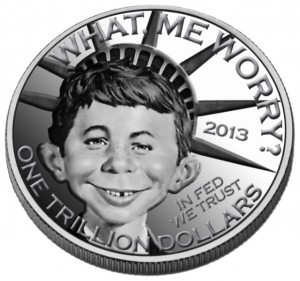
Dallas-based Heritage Auctions, the world’s largest collectibles auctioneer, is asking the public to suggest names, and has even created a proposed design for the coin. Information about naming the coin now is on Heritage’s Facebook pages.
I love that phrase, “and for other purposes.” Adding it allows congress to add their favorite brand of pork onto any bill.
The problem is that H.R. 77 might make sense if it was not introduced in reaction to the rumored $1 Trillion platinum coin. Aside from the platinum coin idea being a nonsense proposal, the idea did not even come from the administration. The best I can find, it was some blogger’s delusion that problems can be solved without the understanding of basic accounting—essentially, balancing the books when you create money. It is amongst the reasons why the nation is in such debt.
Besides, there does not seem to be anyone around who could afford such a coin. It would make a heck of a collectible!
At another time and in a different context, it might be worth discussing the merits of H.R. 77, which would limit the face value of any coin produced by the U.S. Mint to $200. But for now, both the Department of the Treasury and the Federal Reserve said that it is not going to happen and that neither “… believes that the law can or should be used to facilitate the production of platinum coins for the purpose of avoiding an increase in the debt limit.”
Unfortunately, I have a feeling that the Treasury’s statement will not end the discussion.
Maybe we can change the subject to replacing the paper dollar with a coin!
The Alfred E. Neuman-head Trillion Dollar coin mockup courtesy of Heritage Auctions. And if you think that’s funny, it seems that the mad folks at Mad magazine thought if it first!
Jan 6, 2013 | bullion, coins, commentary, Eagles, gold, legal, platinum, policy
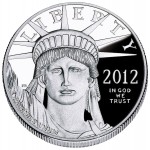
Obverse of the 2012 American Eagle Platinum Proof
Regardless of the side of the political spectrum you are in this topic, it will not work.
The United States Code (U.S.C.) is the codification of the laws of the United States. It is divided into 51 titles each covering one general topic. References to the law are made by providing the title number, followed by “U.S.C.,” then the section of the law. Subsections are added using parentheses after the section. All of the laws governing the U.S. Mint are under Title 31. When talking about what coins the U.S. Mint may be allowed to strike, you would find those laws in Title 31 Section 5112 (
31 U.S.C. §5112).
First question is whether it is legal for the U.S. Mint to strike the $1 Trillion coin. Although there are as many answers as there are pundits, everyone points Title 31, Section 5112, paragraph “k” (31 U.S.C. § 5112(k)) that reads as follows:
The Secretary may mint and issue platinum bullion coins and proof platinum coins in accordance with such specifications, designs, varieties, quantities, denominations, and inscriptions as the Secretary, in the Secretary’s discretion, may prescribe from time to time.
This law was passed by congress under their authority in Article 1, Section 8 of the U.S. Constitution that says “The Congress shall have Power… To coin Money, regulate the Value thereof, ….” The law’s intent was to give the U.S. Mint the authority to issue the American Eagle Platinum Bullion and Platinum Proof coins. American Eagle Platinum coins have a $100 face value and sell for a premium over the market price of platinum and taking into consideration coin’s production cost. However, the law does not restrict the issuance of the platinum coin to the American Eagle program.
But is it constitutional? The argument from John Carney of CNBC says it is not by twisting a ruling by the Supreme Court. Carney cites the case Whitman v. American Trucking Assns., Inc. (531 U.S. 457 (2001)) in saying that “the Environmental Protection Agency rule making authority was too broad because Congress had failed to provide ‘intelligible principle’ to guide the agency.” Unfortunately, like a lot of people, Carney reads the headlines and not the majority opinion. In the majority opinion, Justice Antonin Scalia wrote the law “does not permit the Administrator [of the EPA] to consider implementation costs” which is against previous precedent because the Clean Air Act, which was under question, “often expressly grants the EPA the authority to consider implementation costs, a provision for costs will not be inferred from its ambiguous provision.”
In other words, the Supreme Court said that because there are conflicts in the law. The “intelligible principle” is that Congress cannot delegate partial authority over one part of a law where other parts have a requirement to consider other circumstances. In other words, the Supreme Court is saying that Congress has to be consistent in delegating its authority.
Could 31 U.S.C. § 5112(k) be interpreted in the same manner? It is possible for the Supreme Court to declare the law unconstitutional, but if they do so they would also have to rule that the law that allowed the U.S. Mint to create the 2009 Ultra High Relief Gold Coin unconstitutional. According to 31 U.S.C. § 5112(i)(4)(C):
… at the same time the Secretary in minting and issuing other bullion and proof gold coins under this subsection in accordance with such program procedures and coin specifications, designs, varieties, quantities, denominations, and inscriptions as the Secretary, in the Secretary’s discretion, may prescribe from time to time.
Under both 31 U.S.C. § 5112(k) and 31 U.S.C. § 5112(i)(4)(C), the Secretary can authorize the U.S. Mint to strike any denomination platinum or gold coin with the value of $1 Trillion. Since there is no ambiguity or contradictions that would be able to use Whitman v. American Trucking Assns. as a precedence, the constitutionality should not be in question.
If the Secretary could mint and issue a $1 Trillion coin, then the Secretary could mint 17 such coins that could theoretically be used to pay off the country’s debt and give the country a positive balance for the first (and only) time since 1835 under President Andrew Jackson.
For discussion sake, let us say that the Secretary authorized the U.S. Mint to produce a $1 Trillion coin. Who is going to buy the coin?
If the concept is to use the profit (seigniorage) from the sale of the coin, whether it is made of gold or platinum, the coin has to be sold in order for there to be a profit. If the government would just deposit a $1 Trillion coin in the Federal Reserve, then where is the profit for the government? In order for a coin to become legal tender, it has to be bought from the government for at least its face value unless the law allows otherwise (see the American Eagle Bullion program and any of the commemorative programs). The U.S. Mint does not consider a coin to be legal tender until it receives an appropriate deposit of bullion or other forms of legal tender.
It this concept of legal tender that has been behind the government’s position that because the 1933 Saint-Gaudens Double Eagle coin was not paid for by a depositor (part of which is required in 31 U.S.C. § 5122), they are government owned coins (31 U.S.C. § 5121) and not legal tender. This concept has been upheld in the history of the 1933 Saint-Gaudens Double Eagles including the settlement over the Fenton-Farouk coin that sold for $7,590,020 with $20 going to “monetize” the coin.
Most recently, Judge Legrome D. Davis (U.S. District Court for Eastern Pennsylvania) confirmed the legal tender status of the 10 Double Eagles that Joan Langbord allegedly found in a box once owned by her father, infamous Philadelphia jeweler Israel Switt who is considered one of the central figures in the coins removal from the U.S. Mint. In Lanbord et al v. U.S. Treasury (Civil Action No. 06-5315), Judge Davis’s opinion cites past cases including the government’s own case against Israel Switt in 1934 for not forfeiting recalled gold and the previous return of 75 coins attributed to him. His opinion effectively confirms the U.S. Mint’s argument that once it creates a coin it is not legal tender and a liability on their balance sheet until the coins is bought.
If the coin is has to be paid for by a depositor before it can become legal tender, who will buy a $1 Trillion coin?
If the coin is just deposited with the Federal Reserve, there will be a $1 Trillion liability on the government’s balance sheet. In order to make the books balance, the Department of Treasury would have to sell debt bonds to make up the difference and that would add $1 Trillion to the national debt.
If the coin is bought by the Federal Reserve, then the Fed will have to pay $1 Trillion to the U.S. Mint for the coin reducing its overall working capital by $1 Trillion. Paying for a $1 Trillion that could not be used will just transfer the debt from the general treasury to the Federal Reserve. Since the Federal Reserve is in charge of managing the country’s money supply, the net effect will be to reduce the money supply by $1 Trillion that will cause the economy to shrink—any time you artificially remove money from the economy it will shrink which will also weaken the buying power of the U.S. dollar.
Transferring the debt away from the general fund might look good on paper but the effect will shrink the economy and cause more problems than even considering the constitutionality of doing this.
Unfortunately, this scheme was conjured by someone who did not think through the idea thoroughly.
Coin image courtesy of the U.S. Mint.
Dec 20, 2012 | ANA, commentary, legal, news
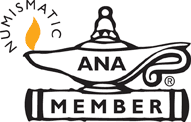 We knew it was coming. The American Numismatic Association issued a press release saying that they are being sued by former Executive Director Larry Shepherd.
We knew it was coming. The American Numismatic Association issued a press release saying that they are being sued by former Executive Director Larry Shepherd.
“There is no merit to any of the allegations contained in the lawsuit, and it will be vigorously defended,” read the press release. “he ANA will make no further comment with regard to this pending litigation.”
This saga started on August 23, 2011 when the ANA announced that Shepherd was placed on administrative leave. After a month of speculation on why the ANA took this action, it was announced on September 28, 2011 that the ANA had “ended its employment arrangement with Larry Shepherd, as executive director, effective as of September 20, 2011. the vote of the Board to sever that relationship was unanimous.”
Obviously, Shepherd did not take it well and issued a statement about his firing when the ANA responded but should not have. All has been quiet until a the Shepherd filed suit for wrongful termination.
This will make two dismissed executive directors who have sued the ANA. Even if the ANA wins their argument, the ANA loses because of the costs to defend itself. Just as the ANA was getting its financial footing back together, here is a potentially large, unexpected expense that has to be dealt with.
If the “third time’s a charm,” then the ANA has done well by hiring Jeff Shevlin. After meeting Jeff, I believe he really has the best interest of the ANA at heart and will do a great job.
Nov 29, 2012 | coins, commentary, dollar, legislative, news, RCM, US Mint
Starting with a blog post on the Wall Street Journal website, the interwebs were all a twitter about the a testimony statement published in advance of the “The Future of Money: Dollars and Sense” hearing before the House of Representatives Subcommittee on Domestic Monetary Policy and Technology November 29, 2012.
The testimony is by Lorelei St. James, Director, Physical Infrastructure Issues of the non-partisan Government Accountability Office. The testimony report, “Benefits and Considerations for Replacing the $1 Note with a $1 Coin,” reiterates the six previous GAO reports claiming large savings by replacing the paper dollar with a coin. This is not a new stance by the GAO. They have issued six reports since 1990 making the same recommendation with the last report (GAO-12-307) released on February 15, 2012—something I wrote about here.
Rather than concentrating on the redux of the GAO’s statements, the media missed the advance statement from Beverley Lepin, Chief Operating officer of the Royal Canadian Mint. In her testimony, Lepin will point out how the RCM changed alloys twice, has a coin recycling program, added color, and has anti-counterfeiting technology for their one-dollar (Loonie) and two-dollar (Toonie) coins.
Basically, Lepin is saying something only whispered by some: the Royal Canadian Mint is more advanced than the U.S. Mint.
But the problem is not the U.S. Mint’s fault. When it come to running their operation like a business, the RCM has a real business structure that works with the the Bank of Canada and the Parliament of Canada to ensure that their money supply is modern and more efficient. Neither Canada’s parliament nor the Bank of Canada micro-manages the RCM’s operations the way congress micro-manages the U.S. Mint.
I know that Article I, Section 8 of the United States Constitution says that “The Congress shall have Power… To coin Money, regulate the Value thereof, …” but it does not say that congress shall have the power to micro-manage the U.S. Mint to the point where it is running using rules that have been made as long as 220 year ago. Maybe it is time to learn the real lessons from the RCM and modernize the structure of the U.S. Mint.
Before some strict constitutionalist or ardent supporter of congress accuse me of trying to usurp congress’s powers, let me remind you that Article I, Section 8 also grants congress the power “To establish Post Offices and post Roads.” The last time I looked, the United States Postal Service is an independent organization that establishes and closes post offices and it has been over 50 years since the last time a “post Road” has been built.
I do not expect anything to happen as a result of this hearing except for verbal fireworks from the politicians, overly excited sound-bites from the cable news talking heads, and incorrect information from the print media—which we will correct here, of course. I will just sit back and enjoy the show of the last hearing of this type held by a Ron Paul-lead subcommittee.
GAO Reports
The following is a list of the reports and testimonies from the Government Accountability Office about replacing the one-dollar note with a one-dollar coin:
- National Coinage Proposals: Limited Public Demand for New Dollar Coin or Elimination of Pennies, GAO/GGD-90-88, May 23, 1990
- 1-Dollar Coin: Reintroduction Could Save Millions If Properly Managed, GAO/GGD-93-56, March 11, 1993
- Dollar Coin Could Save Millions, GAO/T-GGD-95-203, July 13, 1995
- Financial Impact of Issuing the New $1 Coin, GAO/GGD-00-111R, April 7, 2000
- U.S. Coins: Replacing the $1 Note with a $1 Coin Would Provide a Financial Benefit to the Government, GAO-11-281, March 4, 2011
- U.S. Coins: Alternate Scenarios Suggest Different Benefits and Losses from Replacing the $1 Note with a $1 Coin), GAO-12-307, February 15, 2012
- U.S. Coins: Benefits and Considerations for Replacing the $1 Note with a $1 Coin, GAO-13-164T, November 29, 2012
Nov 6, 2012 | commentary, history
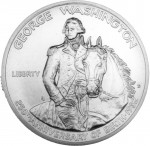
1982 George Washington 250th Anniversary Commemorative Half Dollar
At that time, it was not customary for the candidates to campaign. During the campaign Adams remained in his home in Quincy and Jefferson stayed at Monticello while members of their respective parties campaigned for their nominees. In a near evenly divided country, Adams won the electoral votes 71 to 68. Since Jefferson came in second, the constitution mandated that the second place electoral vote recipient would become vice president.
The election prompted the introduction of what would be the 12th Amendment to the United States Constitution that changed the ballot would be cast for a president/vice president as a single ticket. But the amendment did not see floor action and left the door open for probably the most contentious election in United States history.
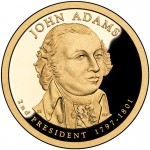
2007 John Adams Dollar
This was the United States’ first really partisan election. The evenly divided parties, electorate, and was one of the first where what we call today “the ground game” was very important especially since each state was allowed to choose its own election day. With the election lasting from April to October, the election came down to the vote in South Carolina with an electoral tie of 65-65. Even though Pinckney was a South Carolinian, the Democratic-Republican state majority chose the state’s eight electors.
Constitutionally in 1800, each elector was to cast two votes, which is where the problem began. Because electors that voted for Jefferson also voted for Burr, both were electorally tied. When all eight electors voted for both Jefferson and Burr, the electoral vote would be tied between Jefferson and Burr.
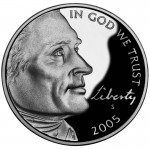
2005 Westward Journey Nickel Obverse designed by Joe Fitzgerald
When the votes from New York were counted, one elector voted twice for Aaron Burr in violation of Electoral College rules. After a contentious discussion, the New York delegation convinced the Jefferson to switch the vote for Jefferson. This gave Jefferson and Burr and official 73-73 electoral vote tie.
As required by the constitution, Jefferson adjourned the joint session of congress and the House of Representatives convened to break the electoral tie. When the House of Representatives selects the president, each state delegation is given one vote and the candidate with the majority wins. Since there were 16 states, the winner must receive the vote of nine state delegations. From February 11 through February 17, the House held 35 ballots with the result of Jefferson receiving 8 votes, Burr received 6, and two submitted blank ballots.
Federalists would not support Jefferson and the Democratic-Republicans did not hold enough state delegations to sway the election. Alexander Hamilton became the lone bi-partisan voice amongst the Federalists. Even though the Federalists did not like Jefferson, Hamilton embarked on a letter writing campaign to convince at least one delegation to change their vote because he felt Jefferson was “by far not so dangerous a man” as Burr. On the 36th ballot, Maryland and Vermont changed their ballots from blank and voted for Jefferson as President.

Series 2004A $10 Federal Reserve Note (Cabral/Snow)
This lead to not-so-nice letters being sent between the two men and mutual friends tried to intervene. Despite the pleas against it, a duel was scheduled for July 11, 1804 in Weehawken, New Jersey. Vice President Aaron Burr shot Alexander Hamilton in the abdomen while Hamilton’s shot struck a tree branch over Burr’s head. Burr was shuttle back to Washington, D.C. and Hamilton was taken to a friend in New York City where he died on July 12, 1804.
Although this year’s election may seem contentious, it will not lead the the death of a participant. Aside from the fact that duels were outlawed after the Burr-Hamilton Duel, we have become more “sophisticated” in managing our disputes. Just ask Al Gore!
On this Election Day, it is your duty as a citizen of the United States of America to VOTE! Make sure you do so today.
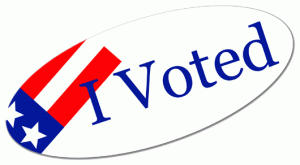
Did you?
Aug 14, 2012 | ANA, commentary, shows
After many years of fighting a few health issues, I attended my first World’s Fair of Money since the 2008 show in Baltimore. It was worth the time I had taken off from work to drive to Philadelphia to attend this show, especially since it was close enough to drive.
 Philadelphia may not be as easy for some to attend like it was for many of us on the east coast. While there were companies and dealers from west of the Mississippi in attendance, those walking the bourse were markedly east coast oriented. There seemed to be a nice crowd drawn from the Philadelphia area and the region extended as far north as New York City and the Washington, DC area.
Philadelphia may not be as easy for some to attend like it was for many of us on the east coast. While there were companies and dealers from west of the Mississippi in attendance, those walking the bourse were markedly east coast oriented. There seemed to be a nice crowd drawn from the Philadelphia area and the region extended as far north as New York City and the Washington, DC area.
I know that the numismatic world extends beyond the megalopolis known as the Northeast Corridor, but dealers have mentioned that this is a good area for the numismatic business. More than one have said that with the World’s Fair of Money being in Chicago the next five years, it is good that the Whitman Baltimore Expo will continue to draw the northeast.
As I was talking with dealers, it was common for them to complement Whitman on putting on the Baltimore show and not being happy with the ANA for the upcoming (CORRECTED) 5 three year run in Chicago. Few have issues with Chicago, but nearly every dealer says that not having a rotating show may make it difficult to reach new customers.
One thing that was striking on Saturday was the number of parents walking the bourse floor with children. Some children were trying to get their Numismatic Passport stamped while others were exploring the world of money to earn their merit badge or even have something new to talk about. There were even parents who attended with small children who were less interested than their parents.
I say “parents” because there were mothers and fathers in almost equal numbers. At several tables, I was able to talk with kids and parents showing them some of the finer points of the meaning behind the money. Imagine lighting up the parents of a pair of Scouts explaining the anti-counterfeiting mechanisms of some of the foreign currency they were looking at.
Being able to sit with someone who can explain more of what they are looking at is an experience that cannot be duplicated in this age of online shopping. There is also an aspect of connecting with the numismatic community that is important for collectors to experience the coin show, especially a show like the World’s Fair of Money.
But next summer and the four succeeding summers, the World’s Fair of Money will not tour the United States meeting collectors everywhere but will be centered in one area. While the Rosemont area is not amongst the most exciting, it is near several suburbs that could draw people. But what about new people? What about new people who could be new collectors or find long time collectors and bring them back into the hobby?
I suggest that the ANA Board of Governors remedy this situation by ending the Chicago run after next summer. I do not think it serves the ANA, the members, or the collecting community to continue with this misguided policy.
Jun 15, 2012 | coins, commemorative, commentary
Twenty-five years ago, on June 12, 1987, President Ronald Reagan stood in front of the Brandenburg Gate at the Berlin Wall and delivered a public message to Soviet Union leader Mikhail Gorbachev to remove the wall between East and West Berlin:
General Secretary Gorbachev, if you seek peace, if you seek prosperity for the Soviet Union and Eastern Europe, if you seek liberalization: Come here to this gate!
Mr. Gorbachev, open this gate!
Mr. Gorbachev, tear down this wall!
The iconic message to Gorbachev was proven prophetic as the Berlin Wall was torn down by the people of Berlin two years later.
Although I am not a fan of Ronald Reagan, I am a fan of history and iconic moments in history. Reagan’s speech that day in Berlin has to rank one of the iconic moments of the 20th century and should be remembered.
So why don’t we have some type of commemorative coin honoring this history?
The main reason what we do not commemorate major historical events is congress. Congress has taken its authority in the Constitution “To coin Money, regulate the Value thereof, and of foreign Coin, and fix the Standard of Weights and Measures” to a parochial degree. It does not say that congress designs the coins nor does it say that once the standards are set, the U.S. Mint could not issue different types of collectible coins based on those standard.
Maybe it is time to expand the role of the Citizens Coinage Advisory Committee to a real coinage advisory committee to recommend producing circulating and non-circulating legal tender coins. The concept of an advisory board to oversee this type of coin production is used in other countries like Canada and Great Britain. While the Royal Canadian Mint can be accused of abusing their authority, the Royal Mint does a better job at limiting the coinage and production to make real collectibles without too many gimmicks.
Using numismatics to honor history and those who made it is not a new idea. Educational Notes of the 1880s were printed with neoclassical allegorical images to represent themes that may have been out of reach for most people. While not popular at the time, the these notes are amongst the most desirable by collectors.
More recently, we have honored the 50 states; national parks and forests; the Louisiana Purchase and the Journey of Merriweather Lewis and William Clark; accomplishments of native Americans; and the Presidents of the United States on circulating coins. Lincoln was honored on the cent which bears his portrait before changing the reverse to honor the union he helped preserve.
Why not use our coinage to commemorate our history? Why not pick four significant events in history, one with a significant anniversary, and honor it on a circulating coin?
With the U.S. Mint looking for a way to increase coin collecting, which is their motivation for producing national parks business strike coins at the San Francisco Mint, why not use the reverse of the half-dollar as the canvas for a historical design series?
Prior to the production of the Kennedy Half Dollar, half-dollars were common circulating coins. Following the assassination of the popular president, people wanted to a souvenir of the slain president so when the new halves were released, the coins were hoarded and effectively ended the circulation of half dollars. Bringing back the half-dollar into favor would not only increase the number of people interested in collecting but the seignorage of these collectible coins would provide a windfall for the general treasury.
Rather than make just collectible business strikes at San Francisco, the new half-dollars struck at San Francisco would be added to the coins sold to the Federal Reserve for circulation. This could build interest in coins produced at the San Francisco Mint, increase production which will increase seignorage opportunities.
Adding the historical half-dollar reverse would introduce new themes that teachers could use to teach students about history, give collectors new outlets, and remind the rest of nation about the rich history that we pride as her citizens.
Of course the extra seignorage would not hurt, either.
May 17, 2012 | commentary, dollar, Federal Reserve, policy
Following up on the lobbying efforts by Crane & Company’s to maintain its business producing currency paper for the Bureau of Engraving and Printing to continue to print the $1 Federal Reserve Note, according to the public filing [PDF] by the Gephardt Group, Crane & Company spent $60,000 for these services.
According to the filing, the specific issue being lobbied for is “preservation of the dollar bill; S.1624, Currency Efficiency Act of 2011.” The Currency Efficiency Act of 2011 was introduced in the Senate by Massachusetts Senator Scott Brown (R) and co-sponsored by Senator John Kerry (D) on behalf of the Dalton, Massachusetts-based Crane & Company. No companion bill has been introduced in the House of Representatives.
The unique provision of S.1624 is that it declares the $1 coins being held in the Federal Reserve be declared as surplus. According to the bill, “Surpluses of $1 coins which can be most efficiently eliminated through destruction shall be deemed to consist of ‘obsolete and worn coins withdrawn from circulation’ under section 5120(a) of title 31, United States Code.”
It is uncertain what the impact of eliminating the $1 Federal Reserve Note will have on Crane and Company. I reached out to Crane and Company for comment and their spokesperson declined to comment.
Crane & Company, BEP, and the Federal Reserve continues to try to resolve a creasing issue discovered during the production of the new $100 Federal Reserve Note. The release of this note has been delayed twice before being delayed indefinitely. When contacted for comment, a BEP spokesperson referred the question to the Federal Reserve. A spokesperson for the Federal Reserve provided a standard response that included no additional information.











